THERE IS A SANSKRIT TERM varchas. Like ‘dharma’, varchas is a word that defies translation, though the dictionary would give several terms like ‘vigour’, ‘energy’, ‘light’, and ‘shape’. It is, however, always used as a positive way of praise. If we say someone is endowed with varchas, we could understand it to mean one who has an irresistible attractiveness, one whose mere presence is enough for people to draw nearer. That even Swami Vivekananda’s photo has that varchas was brought home to me by Swami Srirangananda of the Ramakrishna Mission.
‘A Guiding Light Awakes’
When I was a child, my parents used to take me regularly to the Ramakrishna Mission in Visakhapatnam, Andhra Pradesh. The Mission was situated facing the Bay of Bengal. The beach line was not crowded with ugly buildings then, a clear sixty-five years ago. From the winding road, which was the line that divided the Bay of Bengal from the coastal town, one had a clear view of Sri Ramakrishna, Mother Saradamani Devi, and Swami Vivekananda. The Mission was then looked after by Swami Srirangananda. The evening walk to the Mission was a regular affair. When our parents went in for listening to bhajan and lectures, we had our heart’s fill playing on the clean sands of the beach, where crabs made a variety of designs and prickly ‘Ravana’s moustache’—spinifex—was seen in abundant clusters. Later on, listening to the bells of the arati we ran across the road and into the Mission. The arati over, the swami gave us sugar candy and dried grapes, the day’s prasad. For me this contact with Swami Srirangananda continued for decades. The swami sent me as wedding gift from Ceylon—he was in charge of the movement’s work there—a small lacquer cup with his blessings, and both have endured to this day.
Once I asked the swami: ‘How did you enter the Mission?’ He laughed happily and pointed to a portrait of Swami Vivekananda. ‘He inveigled me into all this by his photo.’ As a school boy, he had seen in a friend’s house the photo of Swami Vivekananda, in which Swamiji was seated on a chair, holding his chin in his hand, a little leaning to the front, the high-necked coat and curls pointing to an unusual personality. ‘Who is this rajakumaran (prince), uncle?’ he had asked his friend’s father. The reply was enigmatic. ‘No boy, it is not the rajakumaran of any state, he is the rajakumaran of the world.’ Swami Srirangananda told me: ‘From that day onwards the face would not leave me alone and when I was seventeen, I entered the Ramakrishna-Vivekananda world.’ I have often wondered how irresistible Swamiji’s personality must have been that just a photograph—probably a cheap litho print, which was all that was available and inexpensive in those days—could effect such a transformation in a ten-year old boy in distant Tamil Nadu. The power continues to flow towards us, as I find in his portrait with the words, ‘Strength is life, weakness is death’. During the last several decades, whenever I have a problem that threatens to depress me, I have just to look at this portrait and the message. I am made whole again.
It is here that we draw close to the theory of incarnation. There are times when the Earth seems fatigued because of the relentless passage of time, with a variety of forces inimical to human advancement. The need of the hour then is for youth power to come to the fore and lead humankind towards a transformation. It is as though world forces compel the Supreme to send a ray of light, whose mere presence chases away darkness. How does it happen? We have no idea. Suffice it to say, this miracle happens.
In the unfolding process of the Self Sometimes the inexpressible Mystery Elects a human vessel of descent. A breath comes down from a supernal air, A Presence is born, a guiding Light awakes.1
With the birth of Swami Vivekananda it is obvious a revealing force had blazed into the earth’s atmosphere. India has been a yoga bhumi, land, from immemorial times. Even Acharya Shankara, whom we salute as the first to speak of Advaita, was actually one who had come after a long line of Advaita Vedantins. Nor was Buddha the first to speak of the Buddhist perception of Reality, and Vardhamana Mahavira was the twenty-fourth Tirthankara. The Truth is always there, eternal.
The incarnation comes to brush up the eternal Truth, which has been allowed to catch dust by the animal in man and the tamas that rules his consciousness and keeps pulling it back to the nether regions by force. A point made eloquently by the avatara Sri Krishna himself in the Bhagavadgita:
Yada yada hi dharmasya
glanirbhavati Bharata
Abhyutthanamadharmasya
tadatmanam srijamyaham.
Paritranaya sadhunam
vinashaya cha dushkritam
Dharmasamsthapanarthaya
sambhavami yuge yuge.
Whenever, O descendant of Bharata, there is decline of dharma, and rise of adharma, then I body myself forth. For the protection of the good, for the destruction of the wicked, and for the establishment of dharma, I come into being in every age.2
Nor was it the Hindu alone who believed in the theory of incarnation who saw Swami Vivekananda as the Divine descended upon earth to lead us from darkness to light. Sister Nivedita reports of the days spent in Nainital with the swami as memorable and revelatory: ‘Naini Tal was made beautiful by three things—the Master’s pleasure in introducing to us his disciple the Raja of Khetri; the dancing girls who met us and asked us where to find him, and were received by him inspite of the remonstrances of others; and by the Mohammedan gentleman who said, “Swamiji, if in after times any claim you as an Avatara, an especial incarnation of the Deity—remember that I, a Mohammedan, am the first!”’3
India became the blessed land again to receive an avatara in Swami Vivekananda. He cleared the many cobwebs that had obscured the brilliance of Indian Vedantic thought like Advaita, the significance of our myths and legends, and the aim of Indian culture, which tends always towards the spiritual. He was on a man-making mission and proved that here is a man who is prepared to wrestle with destiny and achieve a new life of freedom for his people. He had come to transform the nineteenth-century Indian obsessed with Western culture into a person of self-sacrifice and idealism. It was a tremendous task, and because he was an avatara, he succeeded in a big way.
‘Right through the Circlet of the Gem’
Varchas is vigour, says the dictionary. And the first thought that comes to us when we gaze upon the portrait of Swami Vivekananda and his achievements is a personality of vigour who announced: ‘Strength is life, weakness is death.’ The swami could be unnervingly nonsensical in his approach. He did not confine himself to small tasks. He thought big, and so were his plans that comprehended the entire humanity. The mission was to be no isolated ashrama-idea but a mass movement that would go to the people and teach them the integral view of work and spirituality. For this one needed strength, skill, and the will to learn and grow. Even the Englishman was not seen as a political oppressor. Why not turn him into a guru? ‘Sit at their [English’s] feet and learn from them the arts, industries, and the practicality necessary for the struggle for existence. You will be esteemed once more when you will become fit. … Without the necessary preparation, what will mere shouting in the Congress avail?’ (7.147).
Swami Vivekananda’s presence conveyed this need for empowerment by Indians before they could look around for freedom. He minced no words in this regard. Describing this aspect of the swami’s personality, Swam Chidatmananda says:
Under the prevailing conditions, the Swami did not even hesitate to utter such an apparently sacrilegious maxim as, ‘You will be nearer to heaven through football than through the study of the Gītā. These are bold words; but I have to say them, for I love you. … You will understand the Gītā better with your biceps, your muscles, a little stronger.’ Swami Vivekananda has often been described as a prophet of strength; to some extent, it is true. His theory was that, to rise to spiritual equipoise, one has to pass through activity; otherwise, one will lapse into laziness. That was the ailment from which India suffered. He therefore pleaded for strength, so that there might be more activity all around. The Hindus must become more dynamic, more confident in their approach to life’s problems; for expansion is life, while contraction is death.4
There was energy that flowed visibly in whatever he did or said. In his first address, actually nothing more than a spontaneous response to the welcome given by the audience at the Parliament of Religions in Chicago, this flow of pulsating energy can be felt. Only a person with varchas, a splendorous brilliance glowing in his face, could have risen to his full height and spoken so decidedly:
I am proud to belong to a religion which has taught the world both tolerance and universal acceptance. We believe not only in universal toleration, but we accept all religions as true. I am proud to belong to a nation which has sheltered the persecuted and the refugees of all religions and all nations of the earth. I am proud to tell you that we have gathered in our bosom the purest remnant of the Israelites, who came to Southern India and took refuge with us in the very year in which their holy temple was shattered to pieces by Roman tyranny. I am proud to belong to the religion which has sheltered and is still fostering the remnant of the grand Zoroastrian nation. I will quote to you, brethren, a few lines from a hymn which I remember to have repeated from my earliest boyhood, which is every day repeated by millions of human beings: ‘As the different streams having their sources in different places all mingle their water in the sea, so, O Lord, the different paths which men take through different tendencies, various though they appear, crooked or straight, all lead to Thee.’5
There is nothing childish or curmudgeonly about this pride; this is genuine dignity that rises from a deep meditation upon the subject of his nation’s religion. Was he not aware of its drawbacks? Did he not know India lay down in poverty and slavishness? That India was pockmarked by the pest of superstition? India, who was hailed as Mother India, was right now keeping its women in a state of illiteracy and servitude! The less said of the ‘touch-me-not-ism’ that kept one-sixth of the nation isolated, the better!
Certainly, Swamiji knew many things about his motherland, things that shamed him. But he was strong, undaunted. He was born to change this state of affairs. Meanwhile he must make use of the facets of India that made it an extraordinary nation. One must seize the opportune moment and ride on that force in the future as well. Here Owen Meredith’s gemlike poem comes to mind.6 It was a prescribed text for my generation seventy years ago:
Fair chance, held fast, is merit. A certain king Of Persia had a jewel in a ring. He set it on the dome of Azud high; And, when they saw it flashing in the sky, Made proclamation to his royal troop, That whoso sent an arrow through the hoop That held the gem, should have the ring to wear. It chanced there were four hundred archers near, Of the king’s company, about the king. Each took his aim, and shot, and missed the ring. A boy, at play upon the terraced roof Of a near building, bent his bow aloof At random, and behold! The morning breeze His little arrow caught, and bore with ease Right through the circlet of the gem. The king, Well pleased, unto the boy assigned the ring.7
Here was a chance given to this young man, a mere boy among all those elderly leaders of world religions. But he did not list out the woes of his country. He painted no sad picture of the land that he had traversed through his parivrajaka days to excite pity. He was no beggar; he was a prince! The words that marked the beginning of a new age now rolled on with effortless ease, the right message for a global gathering :
The present convention, which is one of the most august assemblies ever held, is in itself a vindication, a declaration to the world of the wonderful doctrine preached in the Gita:‘ Whosoever comes to Me, through whatsoever form, I reach him; all men are struggling through paths which in the end lead to me.’ Sectarianism, bigotry, and its horrible descendant, fanaticism, have long possessed this beautiful earth. They have filled the earth with violence, drenched it often and often with human blood, destroyed civilisation and sent whole nations to despair. Had it not been for these horrible demons, human society would be far more advanced than it is now. But their time is come; and I fervently hope that the bell that tolled this morning in honour of this convention may be the death-knell of all fanaticism, of all persecutions with the sword or with the pen, and of all uncharitable feelings between persons wending their way to the same goal.8
It is a message of warning but also a message of hope. Like the boy who had won the ring with his tiny arrow, this brief speech had won Swami Vivekananda an entry into the intellectual world of the West. The ochre robed sannyasin’s varchas had won the day for Neo-Vedanta. He had dared to warn the West, which had prided itself on its superiority in science, technolog y, and even philosophy. He had also taken the decision to do his best for his motherland, which had become very weak due to internal and external enemies. But what though a few centuries were lost? All was not lost! Had not Acharya Shankara shown the way and rescued the foundations of Indian culture from disintegration? He had rebuilt the structures. Swami Vivekananda would also rebuild the structures. If Acharya Shankara had a limited number of monastic disciples who had helped him in the work of regeneration, he would seek to set up a veritable army of selfless workers to bring back the power and glory of India.
The Light of Freedom’
Yes, he would need the help of the West to turn his visions into reality. But he would not beg. Why should India beg? She can exchange. She had her immense reservoirs of religion and spirituality, which she could exchange for the material help that would be extended by the West. This was the New Creation to be achieved, and life on Earth transformed into a life divine. It was not going to be done by the flicker of one’s eyebrow, but it would be done. Even political liberty calls for great sacrifice, he pointed out in his poem written to mark the 4th of July in 1898, but indicated the day will come when his vision of global unity and freedom too would be a reality:
Bethink thee how the world did wait, And search for thee, through time and clime. Some gave up home and love of friends, And went in quest of thee, self-banished, Through dreary oceans, through primeval forests,
Each step a struggle for their life or death; Then came the day when work bore fruit, And worship, love, and sacrifice, Fulfilled, accepted, and complete. Then thou, propitious, rose to shed The light of Freedom on mankind.
Move on, O Lord, in thy resistless path! Till thy high noon o’erspreads the world. Till every land reflects thy light, Till men and women, with uplifted head, Behold their shackles broken, and Know, in springing joy, their life renewed! (5.440).
How did Swami Vivekananda appear when he read out this poem to his American disciples as a pleasant surprise on the anniversary of the American Declaration of Independence in Kashmir? The swami’s greatness lay in his not resting on the success. One decade of intense activity followed this day in Kashmir, and how much power was packed in those few years! One trembles with astonishment and joy meditating upon this personality. One gains in the process without fail. Swami Nikhilananda reports that nothing could deter Swami Vivekananda even when he was not in good health. Thus, when he returned to Belur Math after his second visit to the West on 9 December 1900, already it was night. The gate of the monastery was locked, for dinner was being served. But the swami simply scaled the gate and went in to join his people. Ah, the joy that must have flowed around in the dining hall at that time!
So much strength, power, energy! Also a heart that was softer than a flower. We have innumerable instances of his love for all humanity and his disciples in particular. No one was rejected by him. Workers for the Mission came from near and far, and they stayed. There were many foreign friends of India who strove to create the new India as the first step to create the new world. Such was his inspiration, and inspiration that carries on even after his withdrawal from the physical. Concluding his biography with the offering of Swami Vivekananda’s mortal frame to Agni, the fire god, Swami Nikhilananda quotes Swamiji’s message, which nullifies the phenomenon of death itself: ‘It may be that I shall find it good to get outside of my body—to cast it off like a disused garment. But I shall not cease to work! I shall inspire men everywhere, until the world shall know that it is one with God’ (5.141). ‘May I be born again and again, and suffer thousands of miseries so that I may worship the only God that exists, the only God I believe in, the sum total of all souls’ (5.137).
That spiritual Power continues to be very much a Presence even today.
(Source: Prabuddha Bharatha Special Edition January 2014)
Note and References
1. From Sri Aurobindo, Savitri, Book I, Canto 4.
2. Bhagavadgita, 4.7–8; translation by Swami Swarupananda.
3. Sister Nivedita, ‘Notes of some Wanderings with the Swami Vivekananda’, in The Complete Works of Swami Vivekananda, 9 vols (Calcutta: Advaita Ashrama, 1–8, 1989; 9, 1997), 9.341.
4. Swami Chidatmananda, ‘A Nation Builder’, Prabuddha Bharata, 67/3 (March 1962), 90.
5. Complete Works, 1.3–4.
6. Owen Meredith was the pseudonym used by Edward Robert Bulwer-Lytton, who was Viceroy of India between 1876 and 1880. It was he who as Viceroy read out the proclamation declaring Queen Victoria as the Empress of India.
His poems were very popular in his time, and it need not surprise us if Swami Vivekananda’s teachers had brought Owen Meredith’s poems to the attention of their brilliant student.
7. ‘The Boy and the Ring’, in Owen Meredith, New Poems (Boston: James R Osgood, 1875), 233.
8. Complete Works, 1.4.
Related

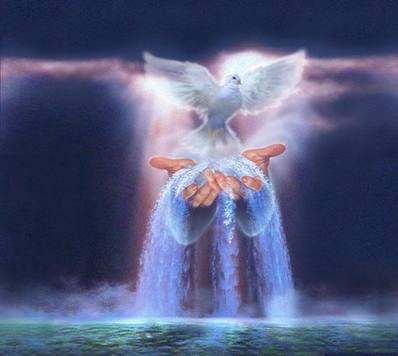
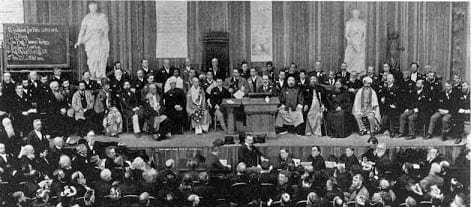

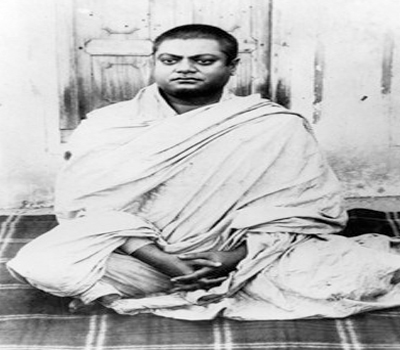
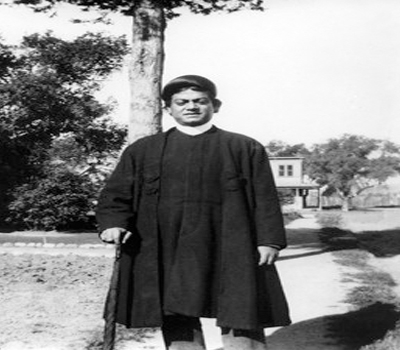
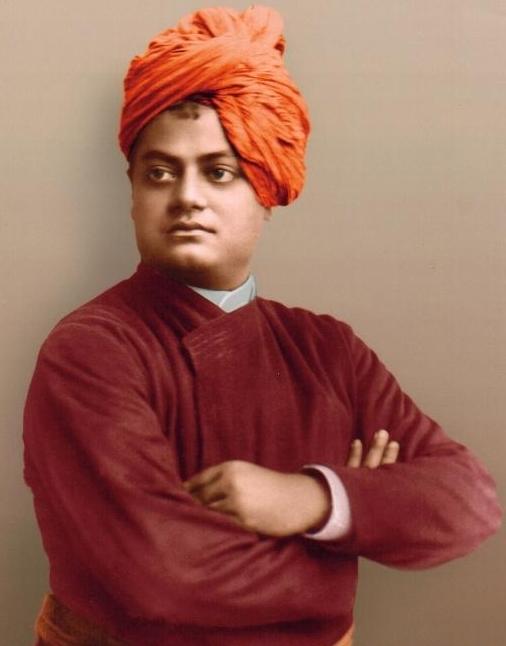
Leave A Comment